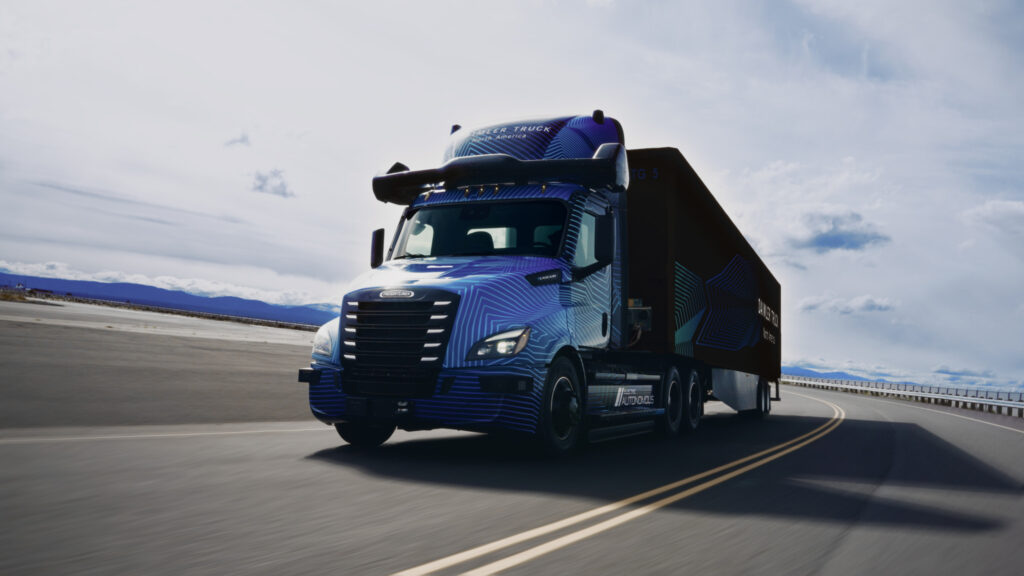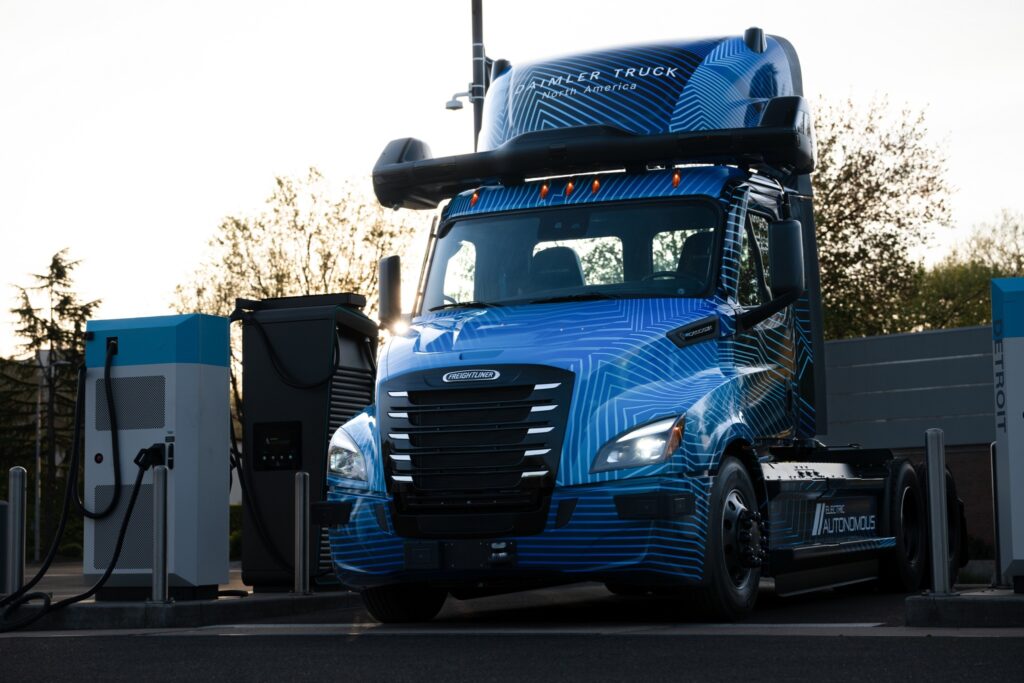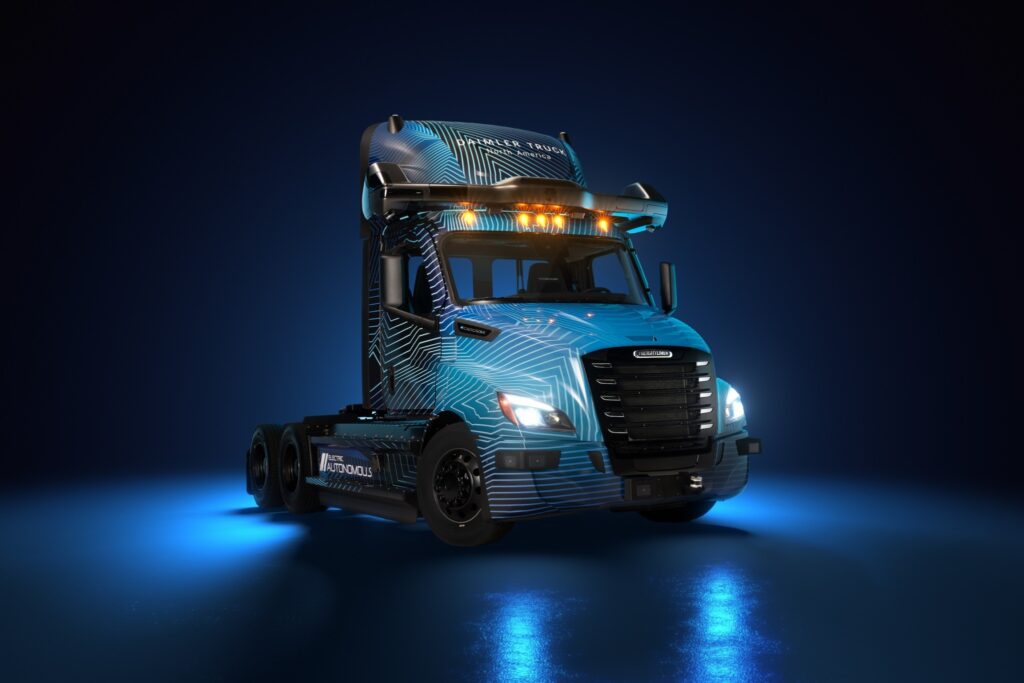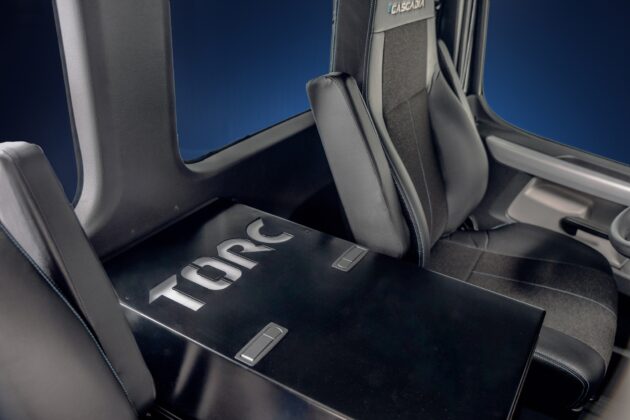Daimler to demonstrate autonomous electric truck
Daimler Truck has announced it will blend its autonomous trucking technologies with its electric truck capabilities to demonstrate its first-ever battery-electric autonomous truck.
A Freightliner eCascadia will serve as the base platform, upon which autonomous technologies will be layered. Its goal is to commercially roll out autonomous vehicles by 2027. The truck maker held a conference call with trade press this week to discuss the initiative, claiming it will not only result in a zero-emission heavy truck, but also one that’s safer.

“By combining zero-emission and autonomous technologies in one product, we are testing solutions for challenges our customers are likely to face in the future,” John O’Leary, president and CEO of Daimler Truck North America (DTNA), said in a related release.
“We want to give them choices that allow them to do what they do best: keep the world moving today and well into the future. That takes a lot of foresight, questioning, testing, learning, improving and co-creating with our customers years in advance to ultimately find the right solution. This truck is a great example of the beginning of that development process.”
But it won’t be simple. For one, Level 4 autonomous trucking hardware and software sucks up a lot of energy, something that’s at a premium on an electric vehicle. Suman Narayanan, director of autonomous driving engineering, noted the autonomous driving hardware includes some 15 cameras, three short-range radars, six long-range radars and four ultra-long-range radars – all of which consume power.
So too does the compute stack, which is packaged between the seats in an eCascadia day cab on the demonstration unit. And all that must be cooled and kept clean, meaning more power draw. Freightliner plans to add a dedicated power source for all this, consisting of four 12-volt lead acid batteries mounted to the back of the cab, to ensure the autonomous driving system remains operational even if the high-voltage electrical system fails.
Today’s autonomous Freightliner Cascadia developed by its subsidiary Torc Robotics, dedicates 3.5 kW of additional power on a diesel platform to power all that hardware and software.
“We know, from the back of a napkin math, it’s going to impact a fraction of the power consumption needed for a battery-electric vehicle,” Narayanan said. “We are adding additional components and some weight, and we want to make sure that’s all taken into account.”
The demonstration truck with be a 6×4 day cab with Detroit tandem e-axles and 438 kWh battery capacity. It will put out 425 hp, have a GVWR of 82,000 lb. and a payload capacity of about 43,000 lb., giving it about 230 miles (368 km) of range.

Charging from 0-80% can be done in 2.5 hours using a single port, or about 1.5 hours using dual ports. In addition to developing autonomous driving technology with its own Torc Robotics, DTNA is also working with Waymo. When it goes commercial in 2027, it plans to offer customers the choice of virtual driver.
Joanna Buttler, head of Daimler Truck’s global autonomous technologies group, said Daimler has been working on commercializing autonomous trucking since 2019 when it took a majority stake in Torc Robotics, and all the pieces are now in place to bring it to series production. It has been running pilots with Torc since 2022, and working with customers such as Schneider and C.R. England to understand the real-world realities autonomous trucks will encounter.
Most recently, it settled on a long range lidar supplier this year.
“Together with Torc, we are making significant progress towards introducing autonomous trucks in the U.S. by 2027,” Buttler said. “While we target autonomous trucks with conventional propulsion technology for this first market launch, we always look further into the future. We will employ an iterative approach to the development, testing and optimization of autonomous-electric technology, while exploring the most promising use cases in collaboration with our fleet customers.”
Daimler said its autonomous truck, when commercially available, will be propulsion-agnostic. But that means retraining the autonomous software to understand the differences between how battery-electric trucks drive and behave compared to their diesel counterparts, especially as it relates to motion control.
Buttler expects repeatable and fixed routes with charging opportunities along them will be ideal for electric autonomous trucks. She says, “Customers will be able to pick from a menu of solutions, depending on their application, and what type of propulsion technology will be most suitable for their use case and able to fulfill their carbon reduction goals.”
This may even include choosing a package that will still have a human driver behind the wheel. Buttler said the eCascadia is a proven platform on which to build an electric autonomous truck. More than 55 fleets have incorporated the eCascadia and have collectively put more than 6 million miles on it. Freightliner is now also producing its medium-duty eM2 electric truck.
Daimler plans to be decarbonized within its core markets by 2039. The company has already begun to analyze routes for testing of the autonomous eCascadia. It will likely start out on roads connecting freight centers along U.S. highway corridors.


Have your say
This is a moderated forum. Comments will no longer be published unless they are accompanied by a first and last name and a verifiable email address. (Today's Trucking will not publish or share the email address.) Profane language and content deemed to be libelous, racist, or threatening in nature will not be published under any circumstances.